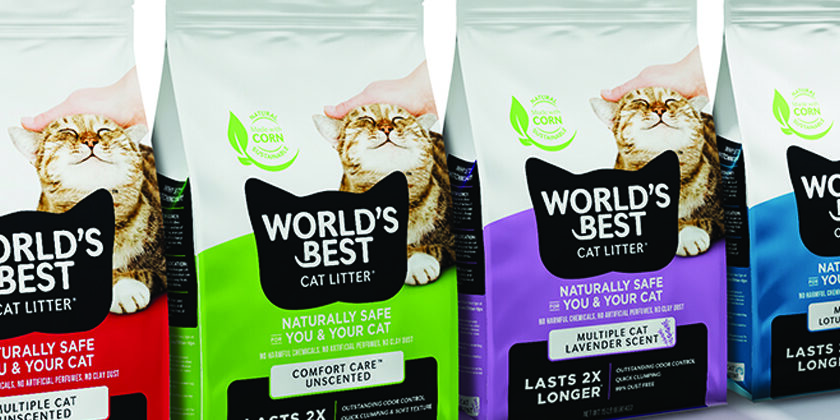Nov 28, 2023
Sexual wellness is essential, so why is the sexual wellness shelf so underdeveloped?
by Crystal Bennett
Birds do it. Bees do it. Humans have been doing it since the beginning of time. And according to Maslow, along with food and breathing, it’s considered a fundamental need.
Why then, does sexual wellness remain one of the more immature CPG categories out there? And for those products that successfully make it to an underwhelming shelf, the restrictions on how to market them are outdated and confusing.
Before we dive into specifics, let’s level set on this topic: nutrition, exercise, sleep, and mindfulness are widely accepted as vital contributors to wellness. And while we all know that relationships are a vital factor in our overall health, the pandemic shined a spotlight on the importance of human contact, intimacy, and yes, even sex. Consumers view sexual pleasure as a means of wellness.
The good news is that conversations surrounding self-care are rising, accompanied by an abundance of new products available across mass, drug, specialty, and even department store channels. Products for nutrition, fitness, sleep and relaxation aids, essential oils are now readily accessible.
The not so good news is that while more retailers are stocking sexual health products, or even better, carving out sexual wellness sections at shelf, it’s 2023 and it still feels like a category that hasn’t advanced to the second date. For the sake of this discussion, I am characterizing the category as condoms, lubricants, sex toys, supplements, enhancers, and related personal care/beauty for sexual health.
Here is my quickie list of what I see happening (and not happening) in sexual health product marketing and how we can continue to nudge the aisle forward.
- Different Strokes for Different Folks. While nobody questions the array of skincare and haircare brands available in store, there should also be plentiful product choice within the sexual health category. DEI is finally getting the airtime it deserves, and if we can acknowledge that humans also possess a wide spectrum of sexual tastes and desires, it’s time to reflect that at shelf. Hats off to online retailers like walmart.com, target.com, and cvs.com who already offer a reasonable selection, however purchasing online has its own set of challenges: it’s inconvenient for a last-minute need or often too conspicuous to be shipped home depending on one’s living circumstances. Time for brick-and-mortar counterparts to rise to the occasion and carry more than male condoms and a few dusty lubricants on store shelves.
- Female Domination. Sex-related products have historically been developed by, controlled by and targeted to men. Thankfully there is an increase in women-owned brands in the space and, even better, the stigma around sexual wellness products for women is breaking down. It is becoming a booming business with a variety of goodies available that us ladies didn’t even know we needed. Products for sexual health and pleasure, including female arousal serum when double pleasure is desired, beauty sheet masks for the vulva (because, why not?) and orgasm balm for heightened sensitivity. More of all this, please.
- Classy Not Trashy. Many sexual wellness products once could only be purchased at erotic stores or on adult websites, leaving the quality and design with much to be desired. It’s satisfying to see the category not only becoming accessible, but evolving to a more tasteful place, with better product and package design and improved function/form/feel. (Can I get a hallelujah?) Importantly, more products are being produced with better-for-you, clean materials and ingredients for those sensitive bits. Just like other CPG categories, consumers are paying attention to and seeking attributes like non-toxic (duh), plant-based, easy-to-clean and store, and produced by trustworthy sources. We can all agree bad design and unsafe chemicals are far from sexy.
- Desperately Seeking Guidance. When our agency worked on the rejuvenation of a prominent feminine-hygiene brand a decade ago, we were stunned to learn that the anatomically correct word “vagina” could not be used in advertising. Baffling, given the plethora of ads for erectile dysfunction openly discussing penis performance at that same time. Sure, marketing restrictions have relaxed somewhat, but it is still the wild west when it comes to marketing sexual health products. For one, the manufacturing and labeling of sex toys are barely regulated, and many times are categorized as “novelty items,” thus exempt from safety and testing requirements. On the flip side, reproductive and sexual health items are still fighting daily censorship in a very gray digital space, so creative experimentation is often the only way to determine what is or is not allowed, with disappointing results. These inconsistencies make it hard to promote a healthy sex life, which as determined earlier, is essential to overall well being. And so the struggle continues.
To wrap up (or tie up, if that’s your thing), the sexual health landscape has improved dramatically over the past decade, so let’s celebrate every bit of progress. But… shocker… sexual activity shows no signs of slowing down, and same goes with consumer demand for related products. Now is our opportunity to enhance sexual wellness into a mass retail destination that is accessible, expansive, inclusive, better-for-you, tasteful, and openly discussed. C’mon marketers, brands, and retailers – time to get busy.



